An extraordinarily successful life came to an extraordinarily tragic end: the German-American star architect and Lord of the Towers, Helmut Jahn, died in a traffic accident on his bicycle on May 8, 2021. He was 81 years old.
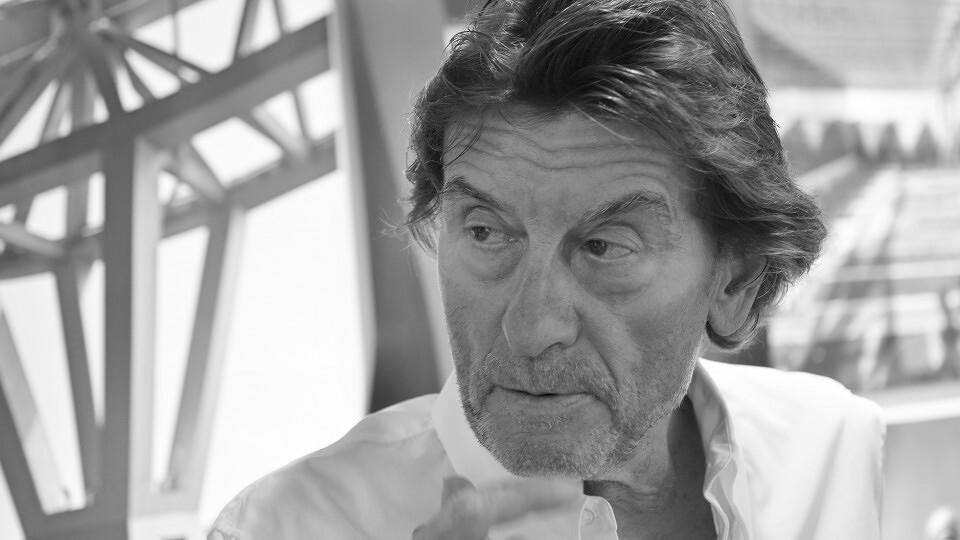
Helmut Jahn (1940 - 2021) built an architectural bridge between Europe and America.
© courtesy Helmut Jahn
Helmut Jahn and I not only happened to have the same surname and the same star sign, we actually met for real once in the mid-1990s. A study trip from the Vienna University of Technology brought me to Chicago, a stay that included a visit to Murphy / Jahn. Beforehand, of course, we students had prepared ourselves for this moment, but to actually experience it, this unbelievably large office on Wacker Drive, Chicago's top address, with so many architects working on the most diverse projects, the impressive plans, sketches and models, the mere imagination could not keep up with it. And then he came: Friendly, eloquent, humorous, inspiring and full of drive.
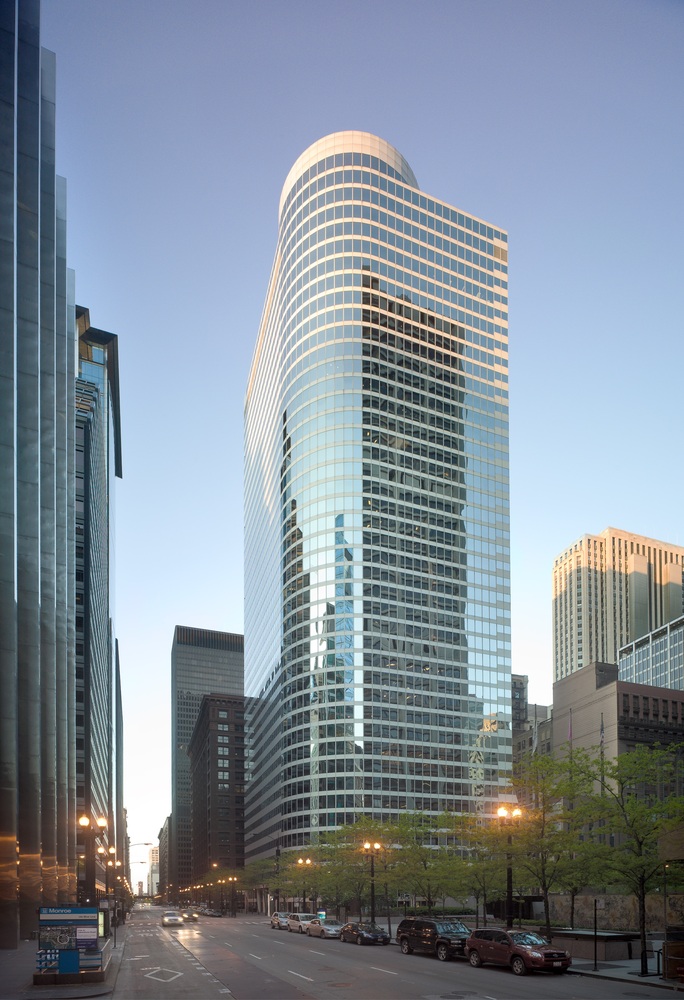
Helmut Jahn's meteoric rise into the circle of the most sought-after architects began with the Xerox Tower (1980).
© courtesy Helmut Jahn
Helmut Jahn, born in 1940 in Zirndorf near Nuremberg, began his architectural studies in Munich in 1960 and continued them in 1966 in Chicago, where his path crossed that of the last Bauhaus director Ludwig Mies van der Rohe. Both went to America - one arrived already famous, the other was determined to become so. And it turned out like that, because immediately after graduating in 1967, the young architect signed on with C.F. Murphy & Associates, a renowned Chicago firm that soon recognised his extraordinary planning skills. As early as 1973, they made him vice-president and director of planning and design. Ten years later, he became a partner of Charles Murphy and the office was renamed Murphy / Jahn. From 2012, it was finally just called Jahn.
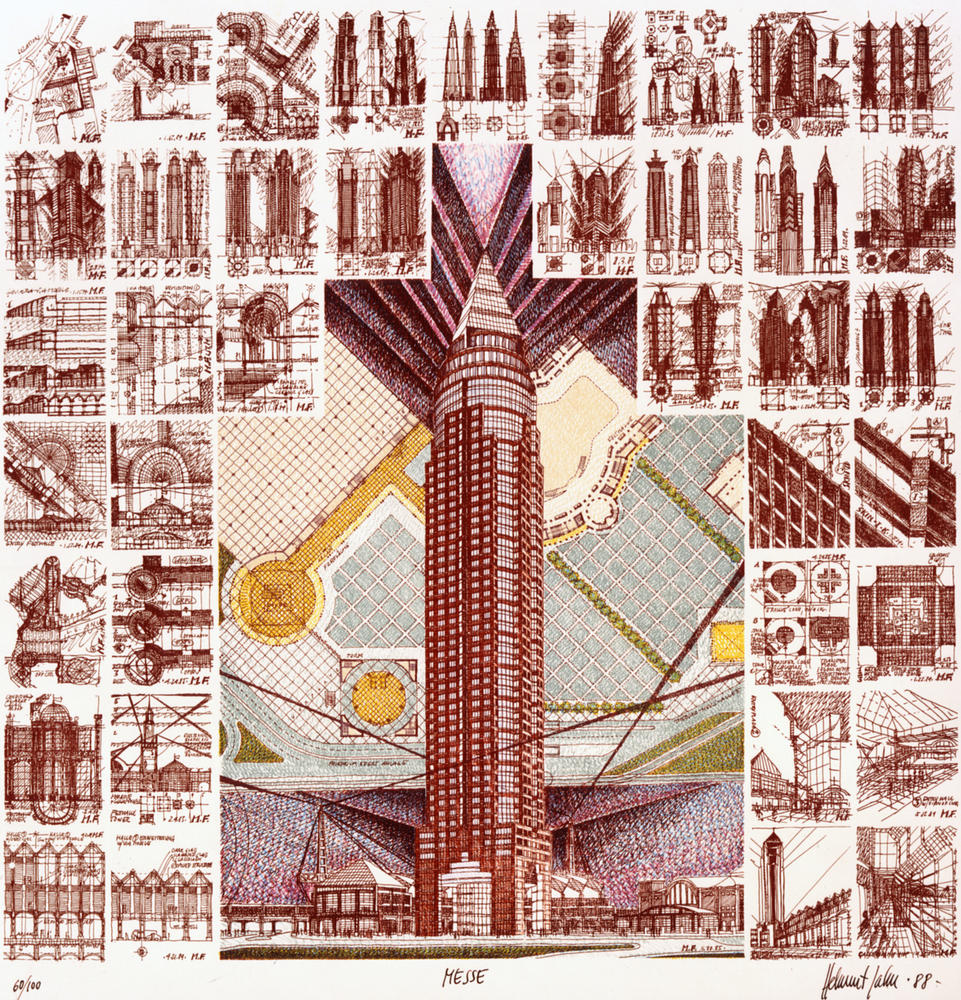
The poster shows sketches of the Messeturm in Fankfurt and demonstrates the multi-faceted draughtsmanship of the exceptional architect.
© courtesy Helmut Jahn
Form follows Force. Very soon Helmut Jahn had found his unmistakable, typical architectural style, influenced by postmodernism and his passion for glass and steel. He did not dwell on small scales at all and early on devoted all his creative energy to monumental buildings and those that scratched the clouds. Almost every building was in some way connected with the erection of a tower, which also earned him the nickname "Father of towers". Always on board with his towers: base, shaft and crown. Just like his unmistakable drawing style - each sheet a sea of detail, often in reddish-brown or black ink, as line graphics or coloured - his teaching activities also went down in history: From 1981, Helmut Jahn taught at various American universities, including the renowned universities of Yale and Harvard. In 1982, Jahn became a full professor at the Illinois Institute of Technology.
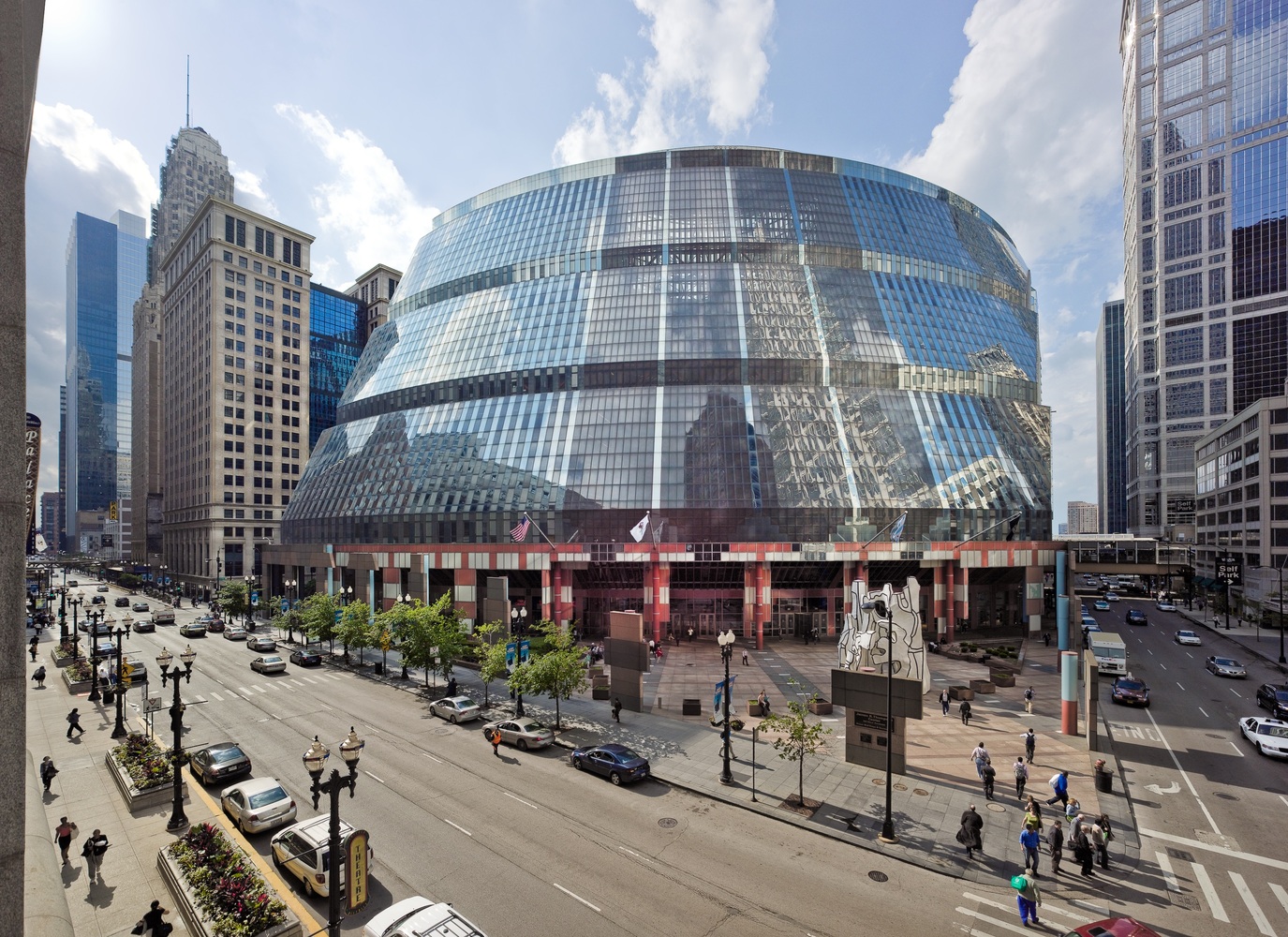
In the pioneering role: The James R. Thomson Center in Chicago (1985) was celebrated as a visionary concept.
© courtesy Helmut Jahn
"Everything you don't need is an advantage. You don't just have to have fewer things, you have to do more with the things you have left." Helmut Jahn
One of his best-known buildings is the Xerox Center, with which he first achieved fame, the unfortunately now dilapidated Staten of Illinois Center in Chicago (also known as the James R. Thomson Center), the trade fair tower in Frankfurt, affectionately known as the "pencil", the legendary Sony Center in Berlin, Terminal 2 at Cologne/Bonn Airport, the Bayer Leverkusen administration building, the Hegau Tower in Singen, the Weser Tower in Bremen and three buildings on Kurfürstendamm - the glass wedge of the new Kranzler-Eck, the extremely narrow "Handtuchhaus" and the Athena-Haus KU 119. One of his last projects to be relaised was - how could it be otherwise - also a tower: the spectacular test tower for high-speed lifts for ThyssenKrupp in Rottweil, which was created in collaboration with Werner Sobek.
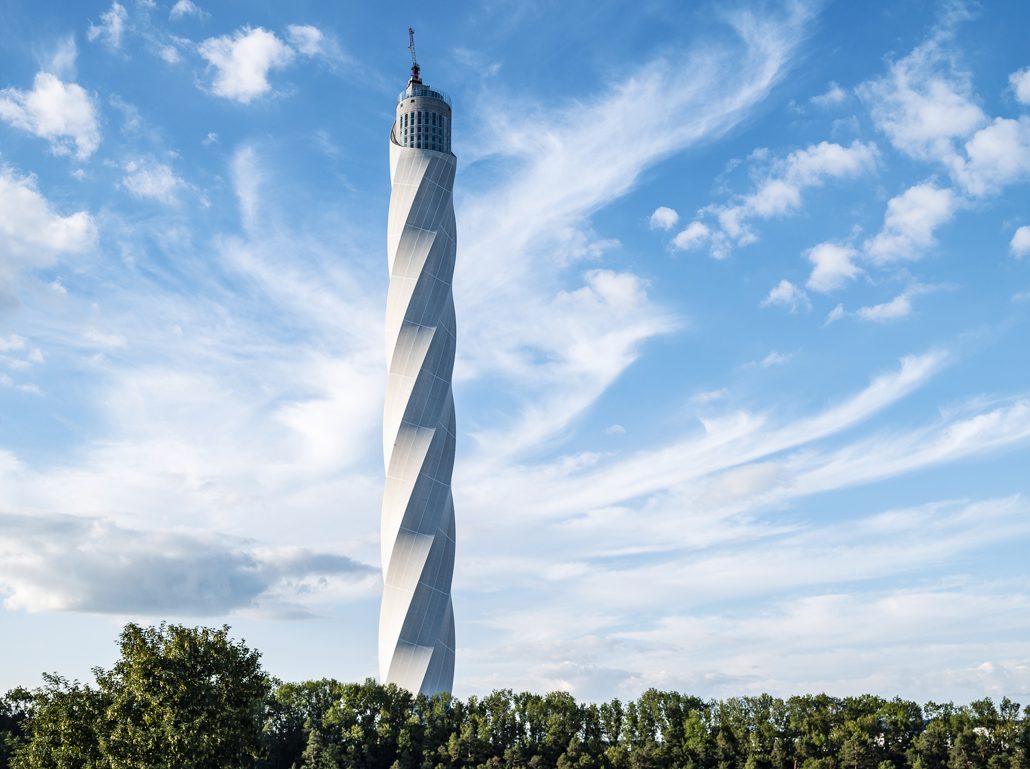
The ThyssenKrupp test tower for high-speed lifts in Rottweil was one of the last projects realised by Helmut Jahn, together with Werner Sobek.
© Thyssenkrupp Elevator
With his unexpected death, he joins the tragic-illustrious ranks of many great architects who were suddenly snatched from life: Carlo Scarpa fell from scaffolding in Japan, Aldo Rossi died after a traffic accident on Lake Maggiore, Antoni Gaudì was hit by a tram and Vittorio Gregotti fell victim to the pandemic. They are all heroes of architectural history, and Helmut Jahn will now be one of them.
.jpg)
Homage to his adopted home of Chicago: The Joe and Rika Mansueto Library.
© courtesy Helmut Jahn
Originally written by Barbara Jahn